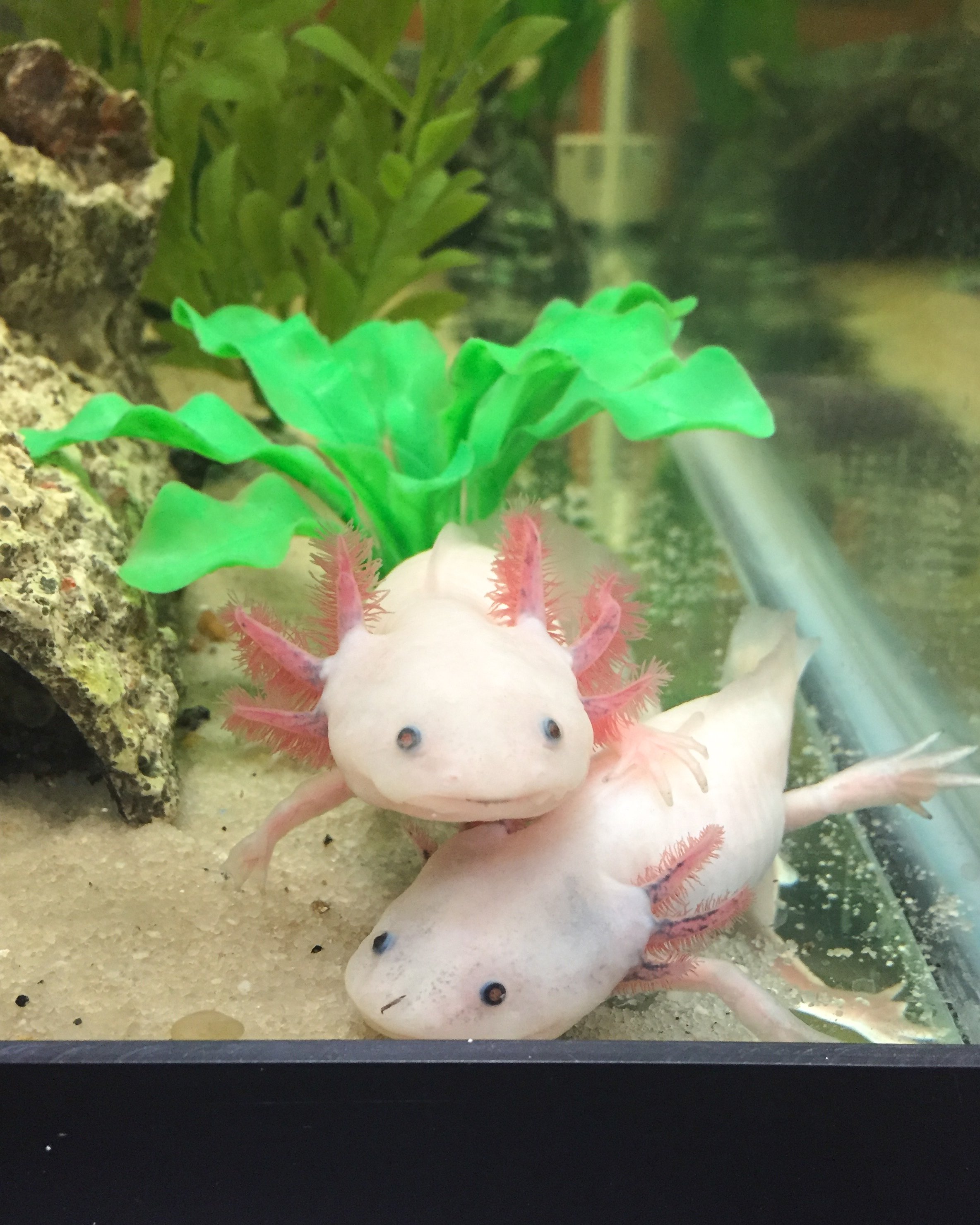In a dark room on the Covenant College campus, two occupants of Mills wait out the night. They are not students with a test tomorrow, nor are they hopped up on caffeine in order to write a paper due at 8AM. They aren’t human at all.
Instead these two are axolotls — nocturnal salamanders native to Mexico. These two, however, are native to Mills bio lab 232. There, the axolotls named Cryptid and Echo spend their days contentedly hiding among the decorations of their tank, waiting for darkness to come out and explore their tiny home. With pink translucent skin, external gills like fern fronds emerging from their heads, wide flat faces and tiny black eyes, some find them creepy. To others, they are adorable.
In the wild, axolotls, also known as ‘mexican walking fish,’ are critically endangered. Their natural habitats are two glacier-fed lakes in Mexico, Lake Lake Xochimilco, and Lake Chalco. However, Lake Chalco has been drained, leaving axolotls with a small, shrinking place to call home. As of today, there are about a thousand or less living in the wild.
Thankfully, they thrive in captivity, and are occasionally kept as pets. These two belong to Anna Claborn, a Covenant Student and Biology major with a love for creepy creatures.
“I just think they’re cool,” she said, as she fished uneaten food pellets from the water and replaced them with fresh ones. “I love weird creatures, so a funky little amphibian that’s always in the baby stage of its life? Ideal.”
Axolotls are indeed a strange species. Though technically a salamander, they never mature past their larval stage, keeping their gills and remaining fully aquatic throughout their entire lives. This strange phenomenon is known as neoteny, the retention of juvenile features in the adult animal.
These little creatures are currently points of fascination for modern science for two reasons: they are highly cancer resistant, and they are capable of feats of incredible regeneration. While regeneration is not uncommon in the animal kingdom, it’s rare in vertebrates. Axolotls can regrow entire limbs, including bones and cartilage. Echo, the larger of the two, is currently regenerating one of her front limbs. The process has taken a couple of years, and it still isn’t fully back, but it’s visibly been recovering. Scientists hope one day they can harness these abilities to aid in modern medicine.
However, Crypid and Echo aren’t participating in any scientific study. They came into Claborn’s home and heart about two years ago. She was scrolling through the app Nextdoor when saw a notice about a family looking to rehome them. She thought, “Oh hey, axolotls! Oh hey, I have time in my life to have axolotls!”
She'd been fascinated by the creatures since childhood, and the idea of having enough time to care for them was exciting.
image by Anna Claborn
“I did a lot of research first to make sure it was a good fit before I said yes. They’re definitely not a beginner animal, but they’re not the hardest one you could keep either, which is nice,” Claborn said.
When Claborn departed for college, Echo and Cryptid came with her. Professor Garris offered a tank and the classroom space, and during breaks, she brings them to and from their tank beside her bed to their temporary home in Mills 232. Getting them ready to travel the six hours to and from the college is a lot of work, and is stressful for axolotls and humans alike.
“They end up in a temperature-controlled cooler with me on the seat beside me. And I anxiously check their temperature at every stoplight.”
Axolotls are native to glacier-fed lakes, and usually require water between 60-64 degrees Fahrenheit to stay healthy and comfortable, making a car trip grueling work.
Thankfully, the journey has brought them safely back to Covenant College for this year. They’re a big hit among Biology students and those Covenant students who enjoy the unusual creatures. For students curious to see some strange and delightful parts of God’s creation, a trip to pay Cryptid and Echo a visit is definitely in order.

